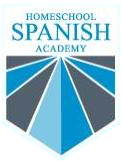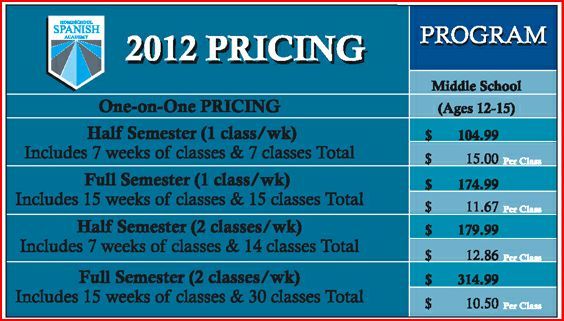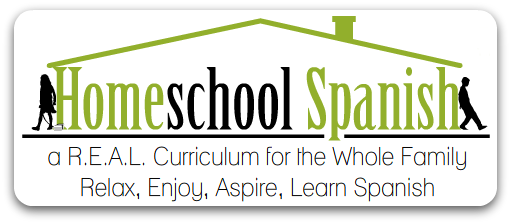
In early September I learned I had been chosen to be part of the TOS Crew team reviewing Middlebury Interactive Languages.
I can't tell you how happy this made me because I myself was permitted to be the student for High School Spanish I.
I really wanted this opportunity because I've been wanting to succeed at learning Spanish. I've been trying half-heartedly for years, but really felt that this time I had/have the time to apply myself and stick with it. Learning Spanish important because of the growing prevalence of Spanish as a language in my world. In addition, my son is taking Spanish I this year (through dual enrollment at the local community college) as one of his high school subjects, and I want to be able to support and assist him, and help him practice.
I received an email from Middlebury with my Spanish I log-in ID and password, with a PDF attachment with "Quick start" instructions on how to log in and proceed through the course.
When you first log in, you land on the "Dashboard". On the right side is the assignment you should be on if you are following the assignment that has been pre-scheduled for you by Middlebury. They set my schedule to cover two lessons a day, to cover the one-year course in six months. I wasn't able to go that fast. If the student (like me) cannot keep up with the schedule that is preset by Middlebury, the mom/teacher is not able to change that schedule (which is preset on a calendar feature of the program).
The way around that is to click on the menu, then select the Table of Contents.
When the student enters via the Table of Contents, they are taken to the lessons. To locate where the student is, click on the lessons. Green check marks show sections completed. It's very easy to see where to start back up even if the student left off previously right in the middle of a lesson.
The program is set up in "Units". Each unit has five "Lessons". Ideally the student will cover one unit per week, one lesson per day. Each unit has a general focus, with each lesson building on the content of the unit while reinforcing information covered throughout the course. Material is presented and reinforced/tested in a variety of ways including videos, PDFs to print out, matching, fill in the blank, audio to listen to, repeat and record, etc.
Graded assignments are graded immediately.
When the student does not know the correct answer and wants to know what the correct answer is, there is a way to get to that information. You get to the information through "Gradebook" on the drop-down menu.
When you select "Gradebook" you get to a couple of features. First, you can see how well the student is doing and how many units, lessons, and sections of lessons the student has done.
Second, you can get to the assignments that the program does not grade that the teacher is supposed to grade.
This one part of the program needs a boost for us homeschoolers because if the parent does not speak the language the student is studying, how can the parent correct or grade the papers? That's why we are using Middlebury in the first place!
The third thing the Gradebook gives you is a grade report for the report card/transcript. Great feature! (Does not include the grades for the "Need to be graded" assignments.)
I want to add one thing here. Even though there were pages to print out, "SCRIPT"s of lessons, vocabulary, etc., I was really struggling to remember the information being presented. I thought back to my middle-school French to remember how we learned and to decide if there was more I could do to help myself remember things.
What is missing is actual writing. When I write things down I make better neural connections. So I started writing EVERYTHING down. I started a notebook of my notes. It really helped me start remembering which words always have an accent, how to spell things. It really made a huge improvement in my learning.
So my final "verdict" is that I LOVE Middlebury Interactive Languages High School Spanish. Maybe you will, too!
Other members of the Review Crew also reviewed various language programs by Middlebury Interactive Languages. To see other product reviews, please click the button below.




















